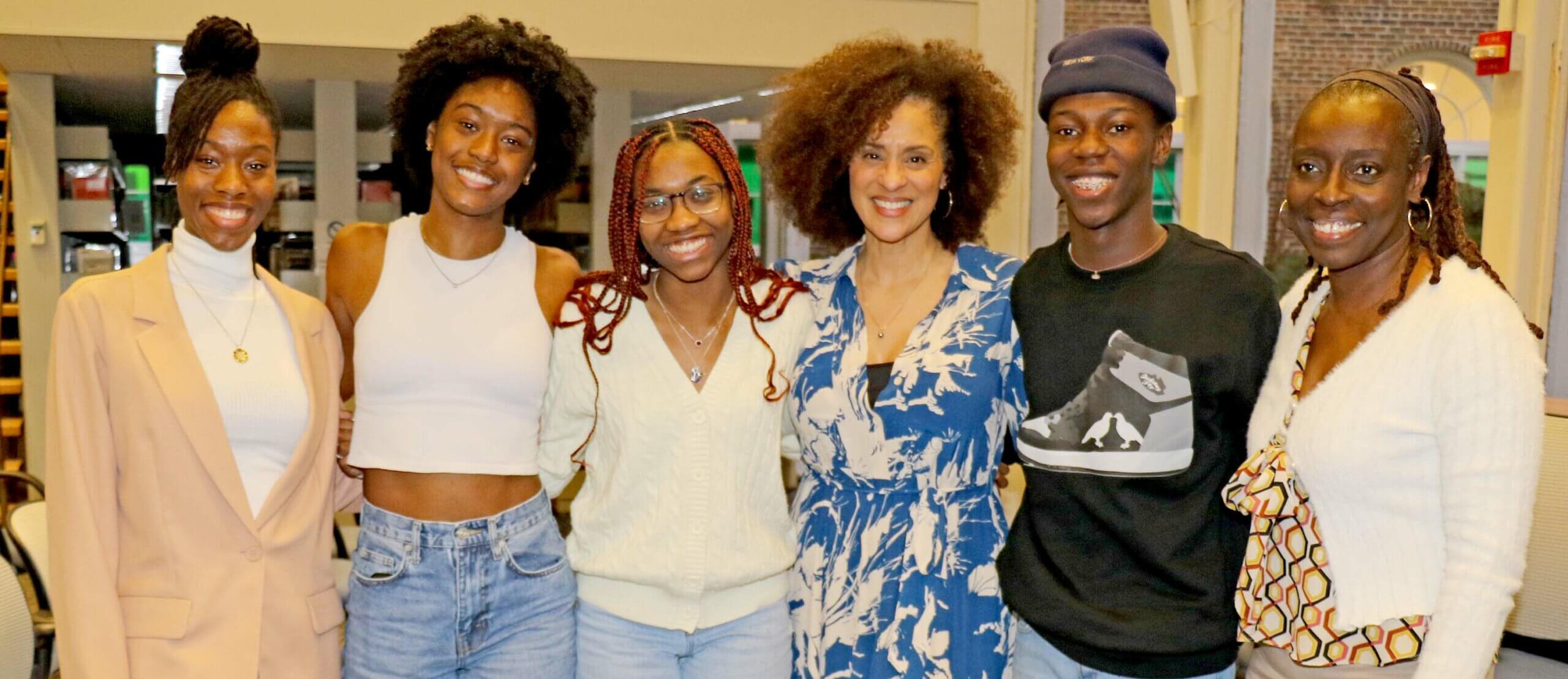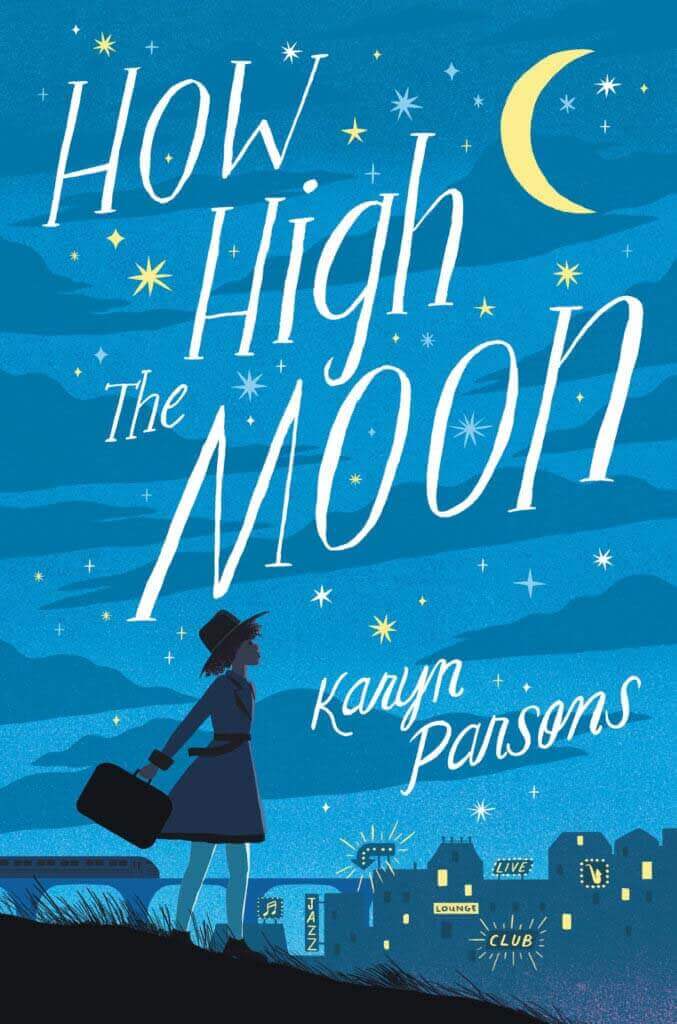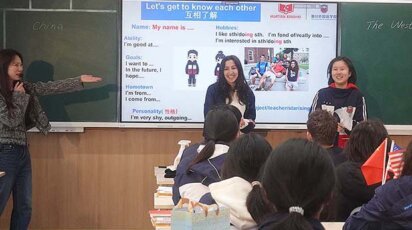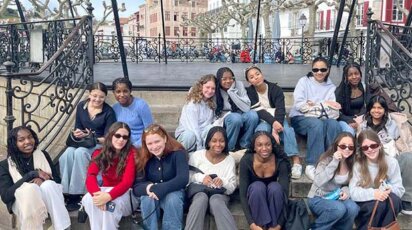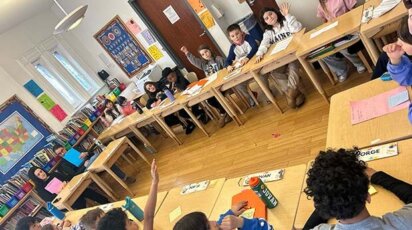News
Actor and Author Karyn Parsons Delights Poly
Hilary Banks was back, this time not in a “town called Bel-Air,” but here at Poly Prep.
As part of our Black History Month programming, actor and author Karyn Parsons, who played the character of Hilary Banks on the much-loved 1990s TV series The Fresh Prince of Bel-Air, was a special guest at a Middle School Assembly and Q&A discussion session on February 22.
Sweet Blackberry
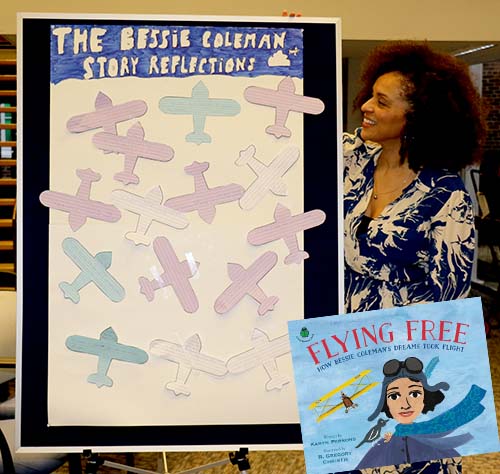
After her time on the series, Parsons founded Sweet Blackberry, “a content company that believes Black history is everyone’s history…. Our mission is to bring little-known stories of Black achievement to children everywhere, celebrating these unsung heroes and illustrating for children that obstacles can be opportunities for greatness.”
Her inspiration was her mother, a librarian in South Central L.A., who told her the stories of “real everyday people, who surmounted the odds.” One story she told was about “Henry Box Brown,” an enslaved man who in 1849 had himself mailed in a crate to freedom in Philadelphia.
At the Middle School Assembly, Parsons showed an animated film about Bessie Coleman, the first Black female pilot, a part of Parsons’ Sweet Blackberry video series. Students learned how Coleman overcame racial and gender discrimination, traveling to France to earn her international pilot’s license in 1921.
Upper School Q&A Session

After school, the community was invited to the library for a Q&A discussion of Parsons’ career and Sweet Blackberry. English teacher and DEIB coordinator Arnelle Williams introduced Parsons and the panel of Upper School students, Myka Modeste ’23, Mia Edwards ’23, and Sundiata Gittens ’23, led the discussion.
On Being Typecast and the Power of Being Oneself
The first question from the panel was about the character of Hilary Banks and whether Parsons felt she had been typecast in the years after the show. She said that when the series first began it was “refreshing to see” that Black people were not a “monolith,” that the family members had diverse personalities. As the series went on, she felt the writers wanted to have Hilary become “a strong Black woman,” but Parsons felt, because the show was a comedy, it was better to allow Hilary to “be flawed.” She could be herself. “I completely admire how unapologetic she was about who she was. I admire her confidence, her drive, and her ferocious ambition… when she wanted to do something, she found her way to do it…. She could be Hilary.”
An Inspirational Co-Star
Parsons said that her co-star on the show, James Avery (1945-2013), was like a father and had a great impact on her. A classically trained actor and military veteran, Avery also had a great interest in Black history.
On Keeping Stories, History Alive
She repeated for the Upper School students the story of Henry Box Brown, and wondered, “How did we not tell that story?” She added, “Stories are not being lost; they are being buried, pushed away for all of us.” When discussing her book, How High the Moon, she referenced George Stinney Jr., a Black boy from South Carolina who was convicted of murder at 14 in a sham trial and executed for the murders of two while girls. His conviction was vacated in 2014. She encouraged students fight against losing stories like these and others to time by seeking them out.
Representation Matters
Parsons told the students how important it is to share the narratives about Black women. “We want to see ourselves, all of us,” she said.
How High the Moon
Parsons concluded the discussion with a very colorful and moving reading from her book, How High the Moon. She explained that the story originated in conversations she had with her mother about her mom’s growing up in the 1940s Jim Crow South in South Carolina. In writing the book, she tried to “walk in her shoes.”
